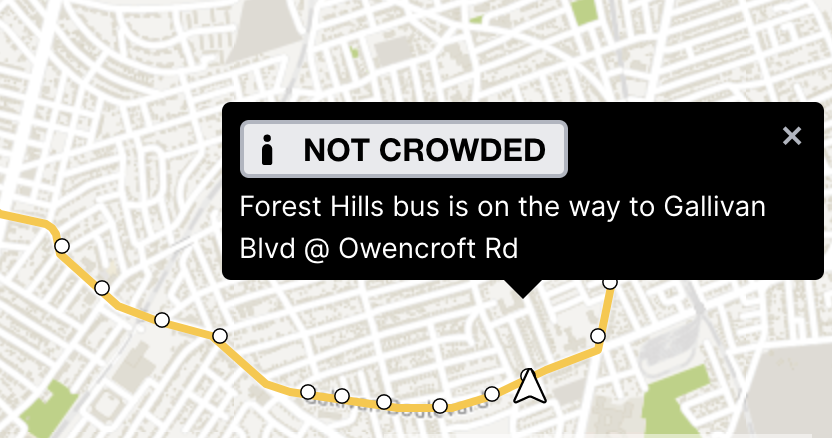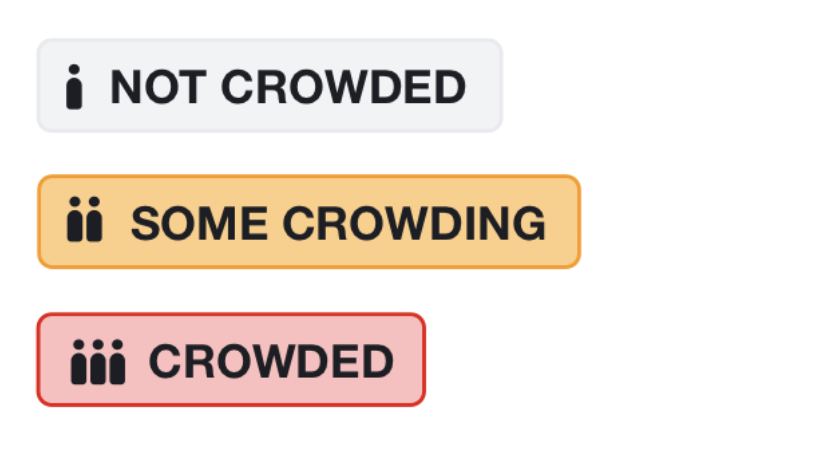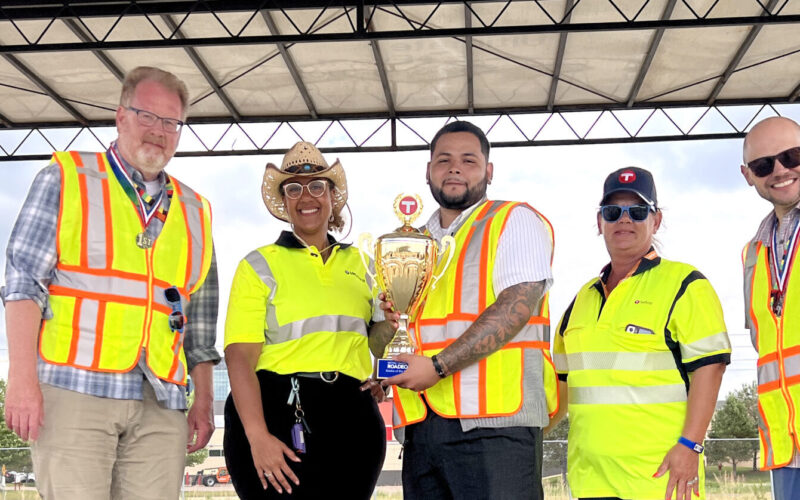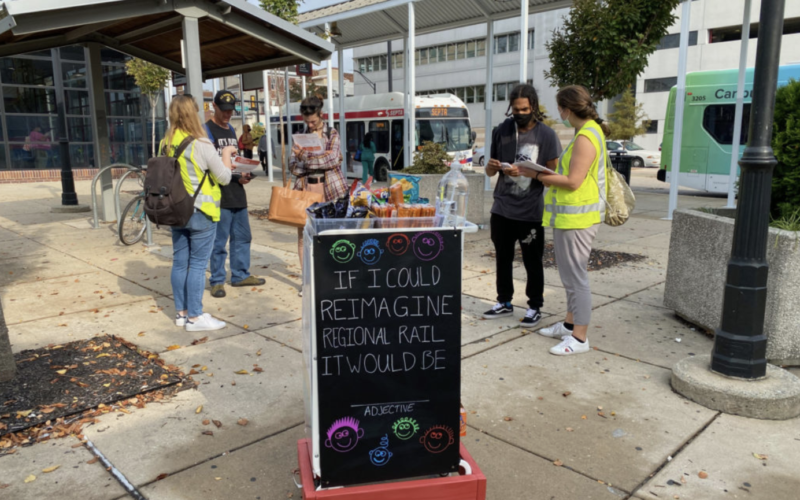
On June 19th, Boston’s MBTA began providing real-time crowding information to bus riders, making it the largest transit agency in the U.S. to do so. The information on crowding levels is available for 23 bus routes, enabling riders to make decisions about how to minimize risk as they travel during the COVID-19 pandemic.
The decision to offer crowding data emerged from rider feedback. At the beginning of the pandemic, members of the MBTA’s customer technology department wondered how they could be most helpful in the moment. They put out a survey about crowding to riders, most of whom were essential workers still relying on transit at the peak of the pandemic. The team received more than 1,000 responses, and the results indicated that riders wanted access to real-time crowding information.
The concept had been percolating in their heads for a while, said Logan Nash, deputy director of real time applications at the T. “With the pandemic it became like, ‘Oh my gosh, this has gone from being a nice-to-have thing to something we really need to be thinking about for our riders.'”
Riders on 23 lines can now see real-time crowding information about their bus route on the MBTA website, and on select digital signs throughout the system. Crowding information is presented alongside real-time bus arrival information, which remains the most important to riders, according to Nash. The information is also pushed out through the MBTA’s GTFS feed, and has been embraced by Transit, a third-party trip planning app.

The MBTA characterizes buses as either “not crowded”, experiencing “some crowding”, or “crowded.”
The tool reports 40-foot MBTA buses as “crowded” when they reach 20 passengers, and 60-foot buses are considered crowded with 31 people on board. This allowance theoretically provides passengers with three feet of personal space. (With widespread mask compliance, transit can operate safely without passengers adhering to six-foot physical distancing.)
The team developed its crowding categories based on what user testers identified as “crowded” in images of bus interiors. “The categories we’re using are ‘not crowded,’ ‘some crowding’ and ‘crowded,’ and that language is deliberately quite simple,” says Nash. “We want to make this information as accessible as possible and especially home in on the fact that these seem to be intuitive categorizations that people seem to understand.”
For the roll-out of the tool, the MBTA prioritized routes with the most crowding. “Earlier in the pandemic, we developed some tools for our operation staff to report crowding to us,” explains Nash. “And so, that combined with just our normal historical ridership data has given us a really clear sense of, these are the bus routes where crowding is an issue right now.”
The team is relying on automated passenger counters (APCs) installed at the front and back doors to relay crowding information. “What we’re basically doing is taking information from these automated passenger counters, transmitting it through cellular and radio connections to our in-house software, which then takes the data and parses it into something that’s usable for riders,” says Nash. “If it sounds a little patched together that’s because it is.”
While the team explored the idea of developing algorithms to process security camera footage to count riders, or investing in a device that counts Bluetooth signals on people’s phones, they ultimately decided to work with the APC data they had, given the urgency of getting the information out.
Because they’re working in uncharted territory, staff validate the accuracy of the crowding data before rolling it out on new lines. This increases the time it takes to add routes to the reporting system, but the team recognized that ensuring accuracy is essential to establish trust. Interns on the technology team are now manually counting bus riders using security camera footage, and are verifying that information with the crowding information communicated to riders. The work, while labor intensive, has paid off. “The accuracy on the lines we have so far is in line with the accuracy of our real-time arrival predictions, which we’ve been publishing for years,” says Nash.
The MBTA currently only offers real-time information on buses, because APC’s are not installed on the agency’s rail fleet. If the T were to share crowding information for trains, it would be based on ridership trends from previous days and not real-time information. “That information would be more for a rider who is planning their trip in the future. Maybe it’s riders who have not been riding transit during the pandemic, but are coming back as things reopen,” says Nash.
How was the T able to pull off such an ambitious project in a matter of months? Nash says a pivotal choice was to rely on data and assets the agency already had, rather than chasing new technologies.
The T’s recent investment in modern software architecture is paying off, as are investments in technology staff over the last decade, according to MBTA Chief Digital Officer David Gerstle. He says the MBTA has a flexible in-house digital team that was able to drop what they were doing and focus on developing the tool. “Having staff like that on hand meant that we were able to take these systems that were not necessarily meant for being able to do this and leverage them in a really innovative way, very quickly.”
The team behind the initiative sees it as a way to help riders, particularly ones who have some flexibility in travelling. But staff recognize that on its own, providing information has limitations. “It’s good information to have if you’re running a little early getting to work, you can be like, ‘Okay. Maybe I will get on the next bus if I know it’s not going to be crowded,’” says Nash. “But for many folks, it’s like, ‘I just need to get to work when I can, I need to get there on time.’” To help riders with less flexibility, the MBTA has been regularly updating bus schedules to ensure that buses are running frequently where there is the most demand.
Nash says the agency is welcoming rider feedback on the crowding project to see what is working and what isn’t. Riders are invited to share their feedback with the MBTA’s Customer Support team.
 New TransitCenter Report: To Solve Workforce Challenges Once and For All, Transit Agencies Must Put People First
New TransitCenter Report: To Solve Workforce Challenges Once and For All, Transit Agencies Must Put People First
TransitCenter’s new report, “People First” examines the current challenges facing public sector human resources that limit hiring and retention, and outlines potential solutions to rethink this critical agency function.
Read More A Transit Revolution in Philadelphia?
A Transit Revolution in Philadelphia?
The Southeastern Pennsylvania Transportation Authority (SEPTA) has been working throughout the pandemic on several system-wide planning initiatives that have the potential to transform transit service in and around the city of Philadelphia.
Read More